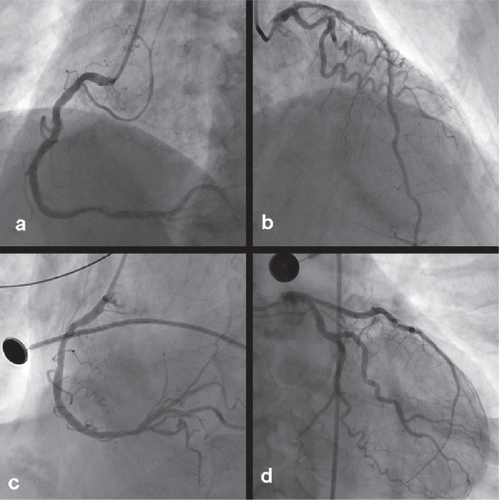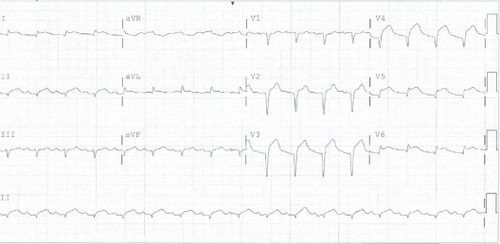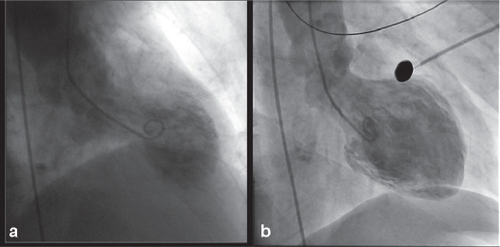Figures & data
Figure 1 The ECG for case one demonstrated prominent ST elevations in the anterior and inferior leads.

Figure 2 In case one, noncritical, distal lesions of the right coronary artery (RCA) (a) and noncritical atherosclerotic lesions of the left main coronary artery (b) did not correspond with the wall motion abnormality observed on ventriculography. In case two, there was no evidence of coronary arterial stenosis of either the RCA (c) or the left anterior descending artery (d).


